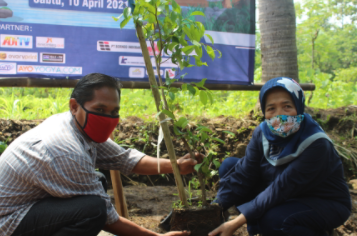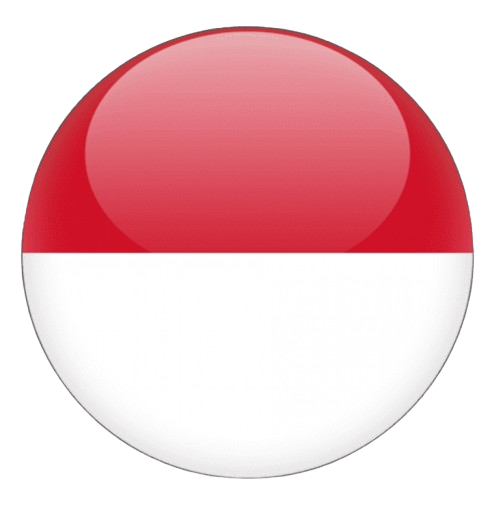UPN “Veteran” Yogyakarta Mining Study Program Serves

Youth Mining Camp Competition is a national mining competition organized by the Mining Engineering Student Association of Universitas Pembangunan Nasional Veteran Yogyakarta. In addition to holding competitions, it also holds community development activities, namely through the “Society Project” event. One of the activities of this society project is planting buffer trees, cultivating vegetable plants, and family medicinal plants. This activity was carried out in Sokoliman Village, Bedjiharjo Village, Karangmojo, Gunungkidul, Yogyakarta on April 10, 2021.
Buffer tree planting itself serves to maintain and increase groundwater reserves. High surface flow due to low vegetation density causes soil compaction so that the infiltration process of rainwater into the soil profile is very low. The impact on groundwater reserves decreases, especially during the dry season. The problem of drought is what happened in Sokoliman Village. The drought also affects the community's main source of income, namely agriculture and livestock. So that tree planting efforts are expected to overcome groundwater limitations in the next 5-10 years.
The trees that are best at helping the soil store water are dicotyledonous trees. Dicotyledonous trees have taproots, i.e. there is one main root which then has a number of branches that spread in various directions. The characteristics of a tree with good roots for water conservation efforts are that it has a lush crown or canopy.
In the first activity of planting buffer trees, there were 5 types of buffer trees planted, namely banyan trees (Ficus benjamina), Bulu trees (Ficus balabacensis), munggur trees, klumpit trees, and Kepuh or Kelumpang trees (Sterculia foetida).
The banyan tree (Ficus) group, namely banyan trees and feather trees, is one type of tree that has the potential as a water protector, a type of water conservation plant that can store and bring water closer to the ground surface. This tree is able to influence the replenishment of groundwater and its roots are able to grip the soil well. In addition, the large roots of Banyan Tree are able to store water well, able to control evaporation (evapotranspration & evaporation) and influence the absorption of aquifers.
Munggur trees or better known as trembesi are also often used as protective or shade plants because they are able to absorb carbon and higher pollutants. Trembesi can absorb CO2 by 28.5 tons/tree/year. In addition, trembesi trees also have the ability to absorb strong groundwater.
Clumpit trees are very suitable for reforestation in areas around water sources, greening riverbanks, their shady thighs and evergreen leaves are also good for use as roadside or garden shade plants.
Kepuh tree has a fairly large crown and roots, so it can function as a regulator of the hydrological cycle because its roots can hold soil water with a large enough capacity. Kepuh, which is able to grow in dry conditions, is able to maintain high soil moisture levels compared to other species.
Tree planting activities were carried out at 4 points of springs, watersheds and roadside areas starting with symbolic planting by department representatives Mrs. Ir. Wawong Dwi Ratminah M.T followed by planting to these points together.
The second activity carried out is the cultivation of vegetables and fruit, this activity is family-based where each family will get 4 types of vegetables and 1 avocado tree. 4 types of vegetables are grouped into 2 parts, 1 part consists of 2 plants, for the first part, namely plants that are common to grow in Gunungkidul in general and Sokoliman in particular, namely purple eggplant and fruit tomatoes and the second part is plants that are not commonly grown in Gunung Kidul, namely cauliflower and chickpeas.
Vegetable cultivation is useful for obtaining benefits both in terms of economics and in terms of consumption as food. In addition, it can get maximum results from the quality of production, and improve the welfare of the community, because it can become a new job opportunity.
The last activity is planting family medicinal plants. Indonesia is a tropical megabiodiversity country, which has an abundance of natural resources, including medicinal plants. The environment around us has actually protected us from various kinds of diseases by providing medicinal plants. Traditional cultural wisdom, one of which is the Dayak culture whose life is inseparable from the surrounding nature, is a huge potential for family medicinal plants (TOGA).
Family medicinal plants (TOGA) are basically plants planted in the yard, garden or plot of land or planted in pots that are used as cultivation of plants that have medicinal properties in order to meet family needs for medicines. Family medicinal plants also function as a utilization of the environment around the house and garden. In this era, more and more families are aware of the benefits of medicinal plants themselves.
Types of family medicinal plants that are utilized by their leaves and their properties include; Daun dewa to cure vomiting blood, Celery to cure high blood pressure, Belimbing wuluh to cure high blood pressure, Moringa to cure internal heat and fever, and spinach leaves to treat blood deficiency.
copied from Ymcc Website



